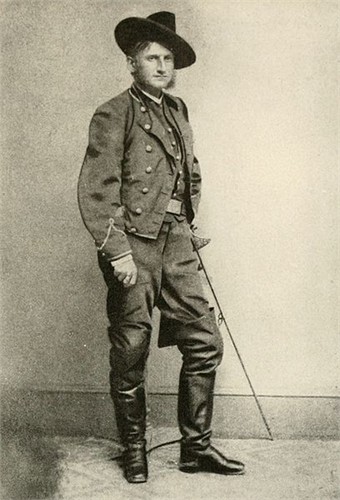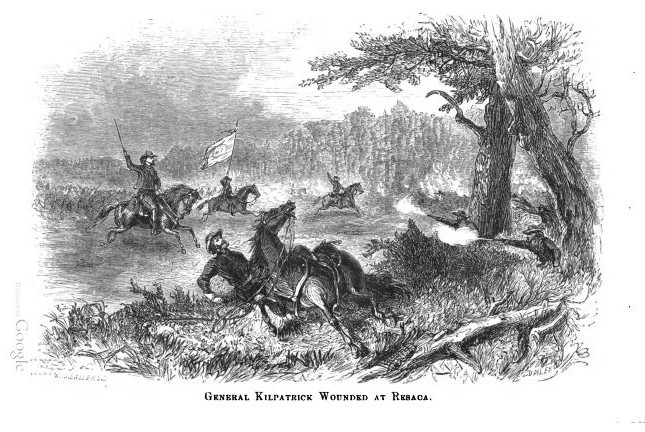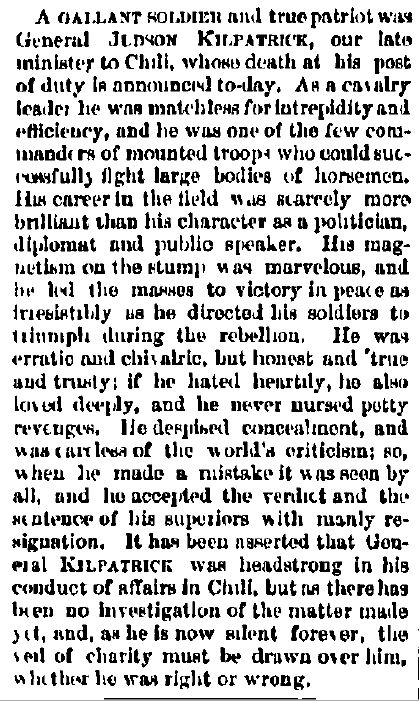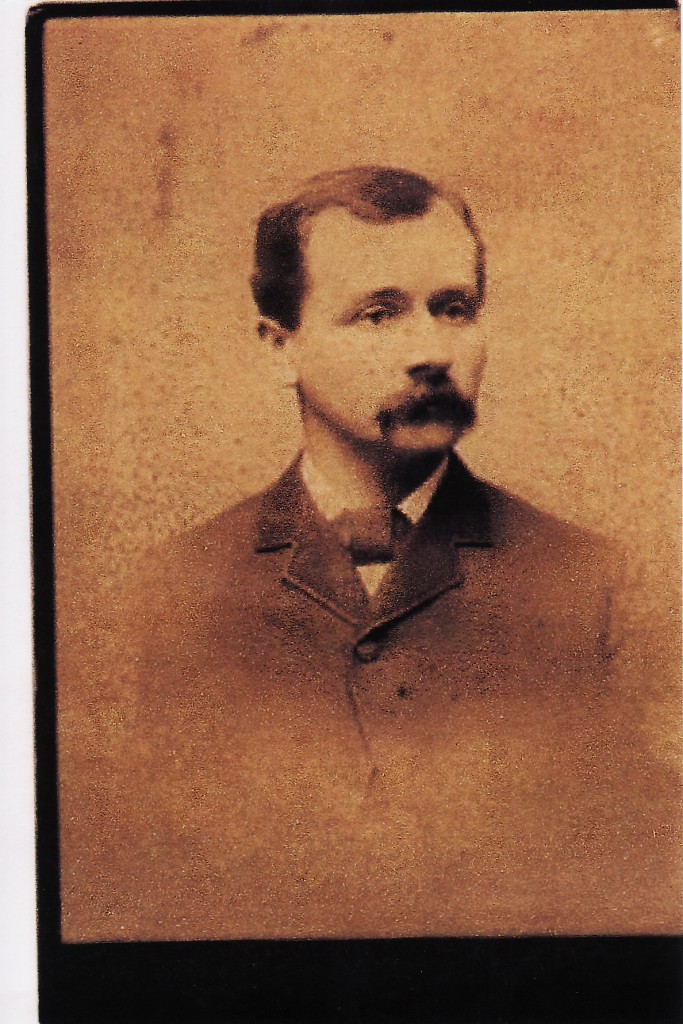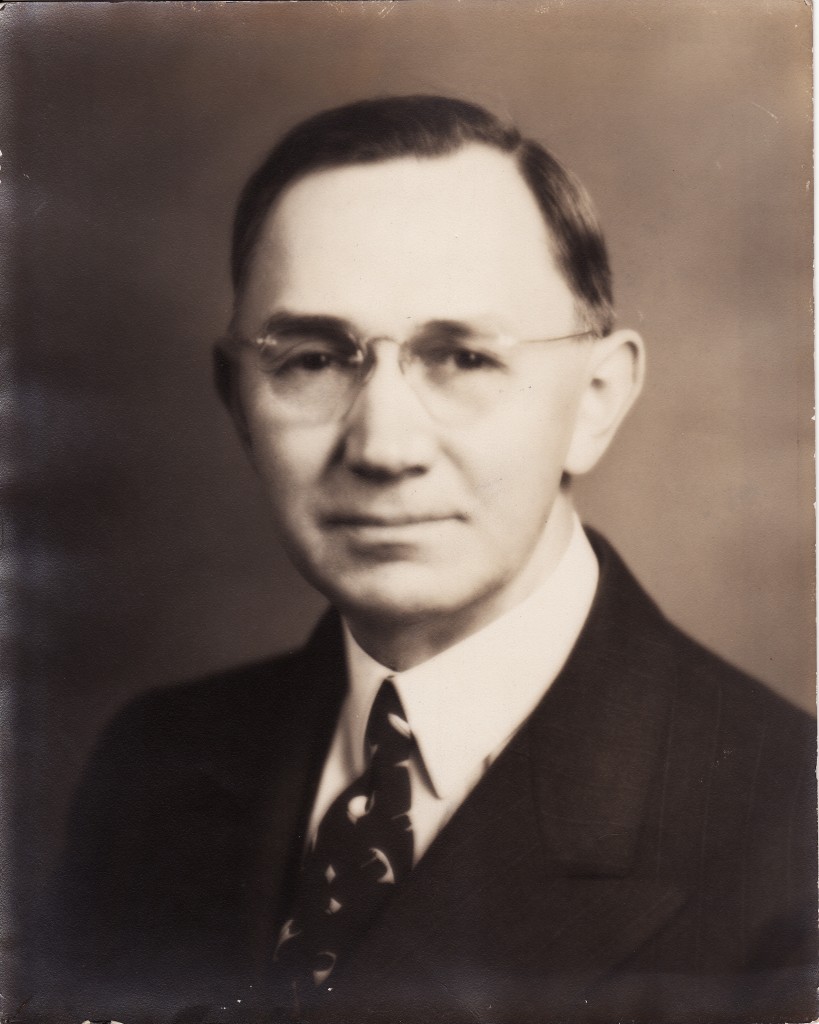Posted By Norman Gasbarro on May 14, 2011

John S. Jury (1831-1910)
Did Lt. John S. Jury keep the pen that was used to sign the terms of surrender at Appomattox, Virginia, on 9 April 1865, and is that pen still in the possession of the Jury family today? On 25 June 1982, an interesting article appeared in The Progress, a newspaper covering Clearfield County, Pennsylvania. The article was by Andy Petkac and was entitiled, “Karthous Heirloom May Have Civil War Ties.”
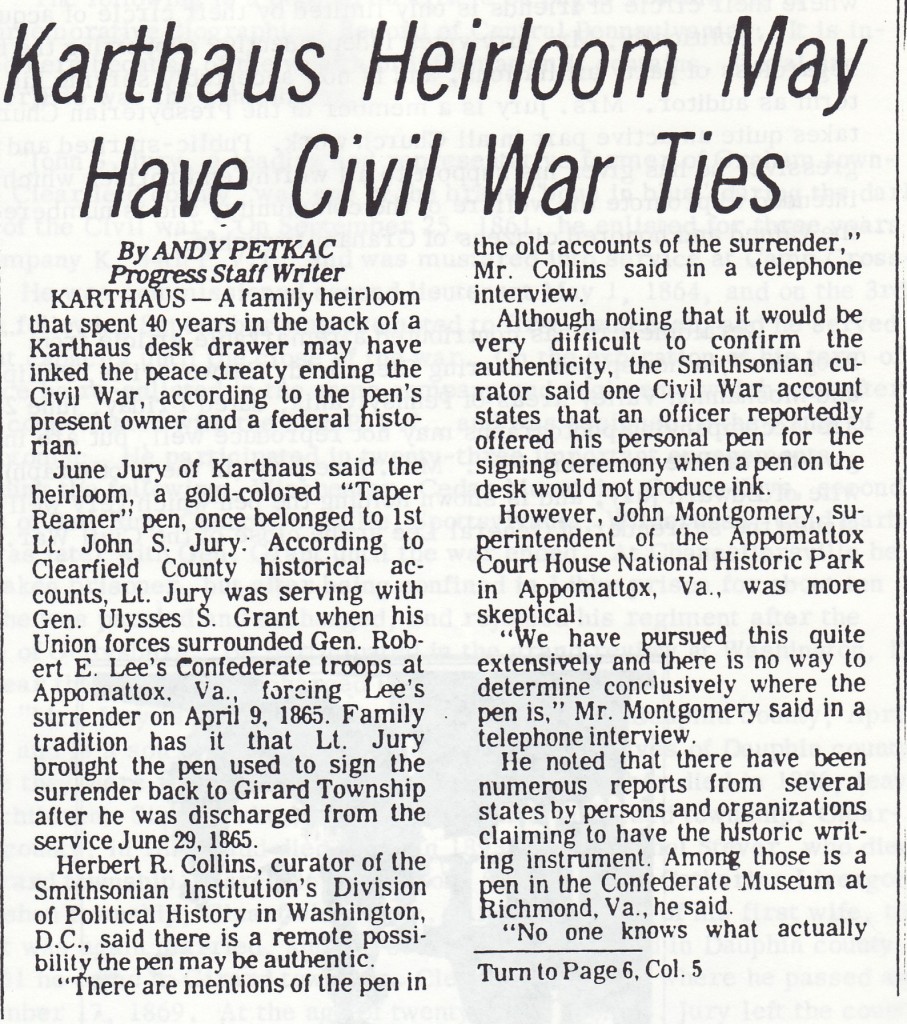
The Progress, 25 Jun 1982
KARTHAUS [Clearfield County, Pennsylvania] —- A family heirloom that spent 40 years in the back of a Karthaus desk drawer may have inked the peace treaty ending the civil War, according to the pen’s present owner and a federal historian.
June Jury of Karthous said the heirloom, a gold-colored “Taper Reamer” pen, once belonged to 1st Lt. John S. Jury. According to Clearfield County historical accounts, Lt. Jury was serving with Gen. Ulysses S. Grant when his Union forces surrounded Gen. Robert E. Lee’s Confederate troops at Appomattox, Va., forcing Lee’s surrender on 9 April 1865. Family tradition has it that Lt. Jury brought the pen used to sign the surrender back to Girard Township after he was discharged from the service 29 June 1865.
Herbert R. Collins, curator of the Smithsonian’s Division of Political History in Washington, D.C., said there is a remote possibility the pen may be authentic.
“There are mentions of the pen in the old accounts of the surrender,” Mr. Collins said in a telephone interview.
Although noting it would be very difficult to confirm the authenticity, the Smithsonian curator said one Civil War account states that an officer reportedly offered his personal pen for the signing ceremony when a pen on the desk would not produce ink.
However, John Montgomery, superintendent of the Appomattox Court House National Historic Park in Appomattox, Va., was more skeptical.
“We have pursued this quite extensively and there is no way to determine conclusively where the pen is,” Mr. Montgomery said in a telephone interview.
He noted that there have been numerous reports from several states by persons and organizations claiming to have the historic writing instrument. Among those is a pen in the Confederate Museum at Richmond, Vs., he said.
“No one knows what actually happened to the pen,” Mr. Montgomery said.
The Jury family account has the pen traveling home with Lt. Jury after he was discharged from the Army at Washington, D.C. in 1865. Following the lieutenant’s death in 1910, Mrs. Jury said, the pen was given to her husband’s father, Norman Jury of LeContes Mills, the lieutenant’s nephew. He in turn gave the pen to her husband Edward Jury of Karthaus, who presented it to her as a gift.
Mrs. Jury has been trying to verify the story that the pen was used in Gen. Lee’s surrender ever since she discovered the heirloom while cleaning out an old desk over 10 years ago.
She wrote to the Smithsonian, to the Appomattox Court House National Historic Park and even to Sen. Edward Kennedy of Massachusetts, who referred her to the Appomattox museum and said it could be a “historical treasurer.”
Ronald G. Wilson, a historian at Appomattox, has asked Mr. Jury to send pictures of the pen and any other information for further study. He also sent along records that verify data in Clearfield County histories from that era concerning Lt. Jury….

Was this the pen that was used to sign the surrender at Appomattox?
John S. Jury was born near Killinger, Upper Paxton Township, Dauphin County, Pennsylvania, the son of John George Jury (1794-1869) and Susannah [Cooper] Jury (1800-1836). His mother died when he was young and his father re-married. In about 1851, after the second wife died, the father moved the family to Clearfield County, Pennsylvania. John was then twenty years old and for a while he was engaged as a teacher in Congress Hill but soon purchased 100 acres of timber land which he cleared and farmed. Later his holdings increased to about 800 acres.
On 25 September 1861, soon after the Civil War commenced, he enlisted for three years in the 84th Pennsylvania Infantry and was mustered into service at Camp Crossman. According to his obituary, he participated in twenty-three important Civil War battles including Cedar Mountain, Bull Run, Chancellorsville, Spottsylvania, the Wilderness, and Cold Harbor. At Chancellorsville, he was taken prisoner and sent to Libby Prison where he remained for only ten days when he was paroled and exchanged whereupon he rejoined his regiment after the battle of Gettysburg. On 1 May 1864, John S. Jury was commissioned a 2nd Lieutenant and by 3 September 1864, he was promoted to 1st Lieutenant, serving with Gen. Ulysses Grant on his headquarters staff, and was was with Grant at Appomattox Court House when Gen. Robert E. Lee surrendered. At about the time of his commission, the 84th Pennsylvania Infantry was consolidated into the 57th Pennsylvania Infantry. On 29 June 1865, Lt. John S. Jury received his discharge near Washington, D.C. and then participated in the Grand Review.
From the family history:
In 1866, in Girard Township [Clearfield County], Mr. Jury was united in marriage with Miss Rebecca McCorkle, a native of Ireland and a daughter of John and Mary [Wilkie] McCorkle, who were born in Ireland of Scotch ancestry, and in 1849 removed their family to Glasgow, Scotland, whence they came to the United States in 1860. In Girard Township, her father opened up a farm, but is now a resident of the city of Clearfield, while her mother died in Graham township in 1881…. Having no children of their own, our subject and his wife have adopted a child. They are widely and favorably known throughout Graham township and vicinity where their circle of friends is only limited by their circle of acquaintances.
Politically, Mr. Jury votes independently, supporting the best man regardless of of party affiliations, and is now acceptably serving his second term as auditor. Mrs. Jury is a member of the Presbyterian Church, and takes quite an active part in all church work. Public-spirited and progressive, he has given his support to all worthy enterprises which are intended to promote the welfare of the community, and is numbered among the valued and honored citizens of Graham Township.
John S. Jury died on 16 August 1910 and is buried in Gillingham Cemetery (also known as Congress Hill), Gerard Township, Clearfield County, Pennsylvania.
The following pictures of the surrender at Appomattox show one or both of the Generals Lee and Grant holding a pen. We may never know for sure whether the pen in the Jury family is the one used at Appomattox.

Grant and Lee signing the terms of surrender at Appomattox Courthouse. Source: David B. Scott A School History of the United States (New York: American Book Company, 1884), p. 383
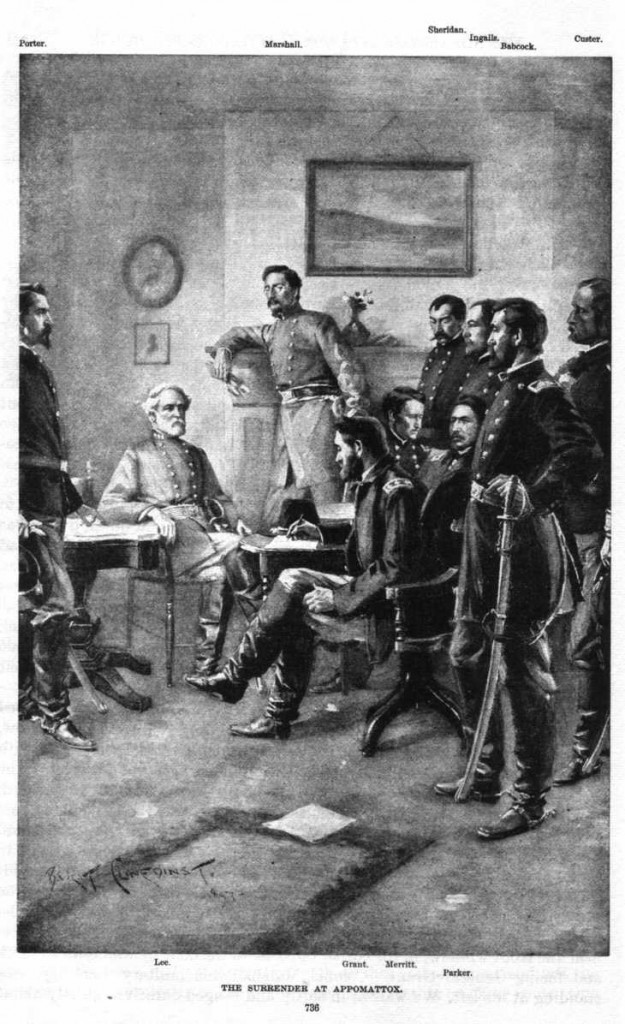
Confederate General Robert E. Lee Signs A Formal Surrender At Appomattox Courthouse
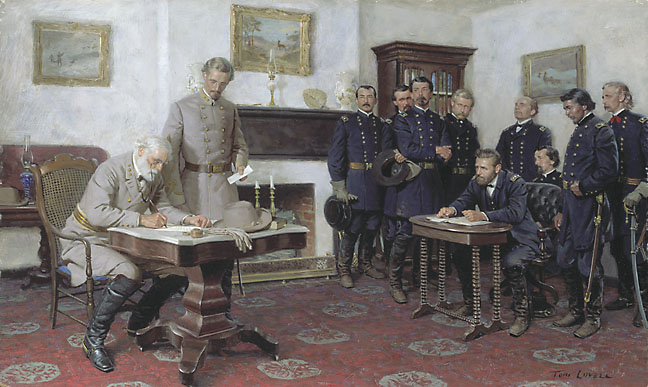
Surrender at Appomattox Court House
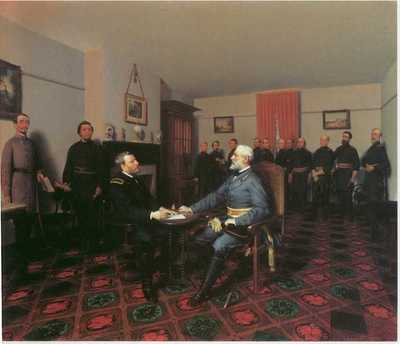
Surrender at Appomattox
Pictures of the surrender signing are from Wikipedia or are from the sites indicated with URL links. Some of the biographical information on John S. Jury is from A Portrait of Our Ancestors, by Irene Parrish Baker, privately published, p. 88-89.4. There is an extensive file on John S. Jury in the Civil War Research Project digital collection.
Category: Research, Resources, Stories |
6 Comments »
Tags: Jury family, Killinger, Regiments, Upper Paxton Township
 ;
;

